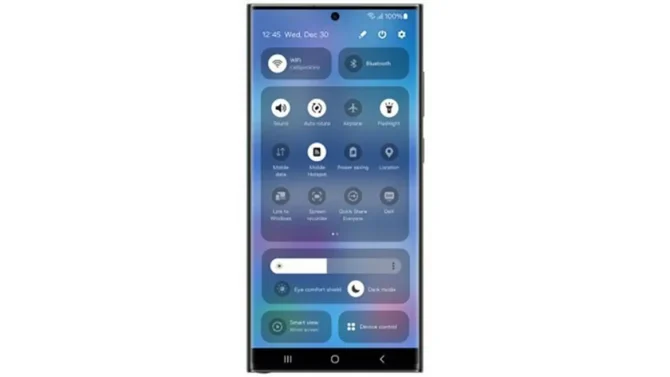Microsoft’s Cumulative Windows 11 KB5029263 Release
It is imperative that all users of Windows 11 promptly initiate the installation of the KB5029263 update. Microsoft has introduced an extensive new cumulative update for Windows 11 under the identifier KB5029263.
In light of this release rectifying a sequence of security concerns within the operational framework, individuals employing Windows 11 22H2 are strongly urged to promptly incorporate it into their systems. While KB5029263 is an obligatory update set to install automatically in due course, its significance justifies the manual engagement to ensure its immediate integration.
Adhering to convention, Microsoft refrains from elucidating the precise security issues that have been addressed in this update, elevating Windows 11 to build 22621.2134 and the servicing stack to version 22621.2061. In addition to the security enhancements, the KB5029263 update has augmented the precision of brightness settings. Furthermore, it has resolved complications with widgets, along with issues related to audio-visual aspects during sleep mode.
Accompanying the unveiling of the KB5029263 update, Microsoft has thoughtfully presented an informative video, encompassing both a succinct overview of the modifications and an array of suggestions aimed at expediting the performance of Windows 11.
The comprehensive compilation of alterations unrelated to security includes:
• Novel! This update has a bearing on the Handwriting Software Input Panel (SIP), the Handwriting Engine, and the Handwriting Embedded Inking Control. These components now uphold GB18030-2022 conformance at level 2, effectively satisfying the requisites of level 3.
• This update resolves a concern inherent to the Windows Notification Platform, which has an impact on the energy consumption of your device.
• The Windows Push Notification Services (WNS) are influenced by this update, fostering greater dependability in the connection between the client and the WNS server.
• An issue that affects devices in a hybrid join configuration is remedied by this update. Without an internet connection, signing into such devices is unfeasible when employing a Windows Hello for Business PIN or biometric credentials. This pertains to instances of cloud trust deployment.
• The domain of Windows Autopilot profiles is influenced by this update. The process of retrieving the Windows Autopilot policy now exhibits heightened resilience, particularly useful in scenarios where network initialization is not fully established. The number of retry attempts for downloading the Windows Autopilot profile has been augmented by this update.
• This update addresses a matter connected with Event Forwarding Subscriptions, wherein the inclusion of an Event Channel to the subscription results in the transmission of redundant events.
• An issue pertaining to the Windows Management Instrumentation (WMI) repository is resolved by this update, mitigating installation errors attributed to improper device shutdown.
• This update rectifies an inconsistency in the reporting of L2 cache for certain CPUs.
• The hinting for select letters within the Verdana Pro font family is enhanced through this update.
• The domain of user mode printer drivers is impacted by this update, curbing their unexpected unloading when multiple print queues are directed towards the same printer driver.
• Text edit controls within XAML and browser interfaces are influenced by this update. A previous issue wherein these controls became unalterable after being designated as read-only has been resolved. This scenario primarily concerned the new Microsoft Input Method Editor for Japanese, Chinese, and Korean languages.
• The label “Change product key” is now announced by Narrator following this update.
• An issue related to the Defender Firewall Profile is addressed by this update. It rectifies the failure of automatic transition from a trusted LAN to a public network.
• The profiles of Country and Operator Settings Asset (COSA) are brought up to date by this update.
• This update tackles a printing-related predicament. An abrupt halt of print jobs attributed to an unforeseen switch in Internet Printing Protocol (IPP) mode is resolved. This phenomenon particularly affects configurations utilizing independent hardware vendor (IHV) drivers.
• A recurring dialog requesting the transition to embedded SIM (eSIM) upon each restart of specific wireless wide area network (WWAN) devices is resolved by this update, even when the user opts for “No.”
• A deadlock within the context of Internet Protocol Security (IPsec) is addressed. Configured servers with IPsec rules would become unresponsive, an issue impacting both virtual and physical servers.
• The MPSSV service-related predicament causing repetitive system restarts is resolved by this update, with the associated stop error code being 0xEF.
• The Windows Kernel Vulnerable Driver Blocklist, DriverSiPolicy.p7b, is expanded by this update to incorporate drivers vulnerable to Bring Your Own Vulnerable Driver (BYOVD) attacks.
• An issue concerning Windows Defender Application Control (WDAC) is resolved, which previously led to the duplication of unsigned WDAC policies onto the Extensible Firmware Interface (EFI) disk partition designated for signed policies.
• An issue regarding WDAC is remedied, alleviating the creation of superfluous audit events resulting from the “Disabled: Script Enforcement” option.
• The fast fat file system driver’s tendency to become unresponsive due to a race condition is rectified by this update.
• This update addresses a shortcoming pertaining to I/O over Server Message Block (SMB), mitigating instances of failure when employing the LZ77+Huffman compression algorithm.
Reiterating, the installation of this mandatory update should transpire automatically. However, one also has the option to manually verify its availability through the Settings application under Windows Update or to obtain KB5029263 from the Microsoft Update Catalog.
Stay Updated about the latest technological developments and reviews by following TechTalk, and connect with us on Twitter, Facebook, Google News, and Instagram. For our newest video content, subscribe to our YouTube channel.





